In recent years, it has become increasingly clear that the latest generation of employees values a healthy work-life balance. As the world of work continues to evolve, employers need to remain competitive in attracting and retaining the best talent.
As we have crossed the halfway mark of Q1 in 2023, it’s time to look at the six trends in employee retention. From building a culture of inclusion and flexibility to invest in professional development opportunities, these trends are crucial for businesses looking to retain top talent and succeed in the ever-evolving world of work.

Data-Driven Approaches
One of the most popular employee retention trends is the use of data-driven approaches. Companies are using analytics to understand their employees’ unique needs and motivations to create a more effective retention plan. This includes tracking employee engagement, analyzing performance metrics, and using predictive analytics to identify potential risks to employee retention.
By analyzing data on employee turnover, absenteeism, and job satisfaction, businesses can gain insights into the underlying causes of employee retention and make decisions to address these issues. On the other hand, employers are also using data to personalize their retention strategies.
Flexible Work
With the rise of remote jobs and hybrid settings, another trend to look out for is the rise of flexible working arrangements. With more companies allowing employees to work remotely or have flexible schedules, creating a culture of trust and open communication is essential. Employers must find ways to keep employees engaged and connected, even when not in the office.
Employees increasingly demand greater flexibility in their work schedules, and employers are responding by offering flexible working options such as flexible hours, compressed workweeks, or remote work options. By offering flexible working arrangements, businesses can attract and retain top talent by giving employees greater control over their work-life balance.
Flexible working arrangements benefit not only employees but also businesses. A study by Owl Labs found that 83% of employers believe that the shift to flexible working arrangements has increased productivity, with 40% citing the ability to work from home as the main reason. The study also found that flexible work schedules boost productivity, with 85% of employers reporting increased productivity.
It also revealed that remote work and flexible schedules could positively affect employee morale and job satisfaction, with 82% of employers reporting that remote work has decreased employee stress levels. In comparison, 80% reported an increase in employee morale.

Branding
It’s becoming increasingly crucial for employers to prioritize their employer branding. To attract and retain the most qualified individuals, they must ensure that their organization is perceived as a desirable workplace. This requires investing in marketing and outreach initiatives, developing a compelling social media presence, and establishing a strong employer brand that connects with both prospective and current employees.
Employer branding has become increasingly important in recent years as employees emphasize working for companies that align with their values and beliefs. With the rise of social media and online reviews, potential employees have greater access to information about a company’s culture and reputation than ever before. Effective employer branding can also increase employee engagement, job satisfaction, and retention.
Mental Health Assistance
The past two years have been challenging for many individuals, and the effects of the pandemic, inflation, and job duties have taken a toll on employees’ mental health. As a result, companies need to step up and prioritize their employees’ mental well-being by providing them with personalized support. Recent data from the employee wellness platform Gympass indicates that almost half of employees (48%) experienced a decline in their well-being in 2022, and a staggering 28% reported feeling miserable at work.
Health experts predict that employees’ mental health will continue to deteriorate amid economic uncertainty, which could lead to a rise in mental health issues. Therefore, it’s imperative that employers take proactive measures to support their employees’ mental health and well-being. By offering benefits, perks, and wellness programs that prioritize mental health, employers can boost employee retention, productivity, and overall well-being.
Learning and Developing Opportunities
Learning and developing opportunities have been on the rise in recent years. Not only are workers looking for professional growth opportunities at an employer, but many organizations are upskilling or reskilling workers, as it’s often less expensive to reskill a current employee than hire a new one.
On the other side, employees who receive learning and development opportunities are more likely to stay with the company and grow into different roles. Therefore, learning and development initiatives are a win-win situation for employers and employees.
Maximizing Employee Retention Potential
Employers who stay abreast of these developments can ensure they stay competitive in the constantly changing realm of employee retention. By comprehending their workers’ requirements and incentives, establishing a culture of transparency and effective communication, and allocating resources towards initiatives like adaptable work arrangements and mental wellness assistance, employers can establish a solid foundation for future success.
These employee retention trends are not only crucial, but they can also improve productivity, engagement and overall job satisfaction. Turnover can be a significant expense for businesses, as they must invest in recruiting, onboarding, and training new employees. By retaining their current employees, employers can save on these costs while benefiting from experienced team members’ knowledge and expertise.








